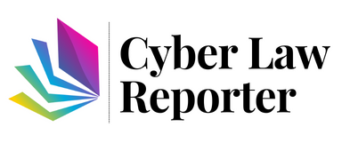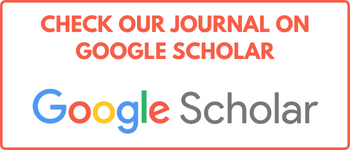By submitting an article to any of the journals published by this publisher (The Law Brigade Publishers), I certify that;
- I am authorized by my co-authors to enter into these arrangements.
- I warrant, on behalf of myself and my co-authors, that:
- the article is original, has not been formally published in any other peer-reviewed journal, is not under consideration by any other journal and does not infringe any existing copyright or any other third party rights;
- I am/We are the sole author(s) of the article and have full authority to enter into this agreement and in granting rights to The Law Brigade Publishers and I am/ We are not in breach of any other obligation;
- the article contains nothing that is unlawful, libellous, or which would, if published, constitute a breach of contract or of confidence or of commitment given to secrecy;
- I/we have taken due care to ensure the integrity of the article. To my/our knowledge, all statements contained in my/our submission purporting to be facts are true and any advice or instruction contained in the article will not if followed accurately, cause any injury or damage to the user.
- I, and all co-authors, agree that the article, if editorially accepted for publication, shall be licensed under the Creative Commons Attribution License 4.0. In line with The Law Brigade Publishers\’ Open Access Policy, data included in the article shall be made available under the Creative Commons 1.0 Public Domain Dedication waiver, unless otherwise stated. If the law requires that the article be published in the public domain, I/we will notify The Law Brigade Publishers at the time of submission, and in such cases, not only the data but also the article shall be released under the Creative Commons 1.0 Public Domain Dedication waiver. For the avoidance of doubt, it is stated that sections 1 and 2 of this license agreement shall apply and prevail regardless of whether the article is published under Creative Commons Attribution License 4.0 or the Creative Commons 1.0 Public Domain Dedication waiver.
[End of license agreement] _________________________________________________________
Explanatory notes regarding The Law Brigade Publisher’s license agreement
As an aid to our authors, the following paragraphs provide some brief explanations concerning the Creative Commons licenses that apply to the articles published in The Law Brigade-published journals and the rationale for why we have chosen these licenses.
The Creative Commons Attribution License (CC BY), of which CC BY 4.0 is the most recent version, was developed to facilitate open access as defined in the founding documents of the movement, such as the 2003 Berlin Declaration. Open access content has to be freely available online, and through licensing their work under CC BY authors grant users the right to unrestricted dissemination and re-use of the work, with only the one proviso that proper attribution is given to authors. This liberal licensing is best suited to facilitate the transfer and growth of scientific knowledge. The Open Access Scholarly Publishers Association (OASPA) therefore strongly recommends the use of CC BY for the open access publication of research literature, and many research funders worldwide either recommend or mandate that research they have supported be published under CC BY. Examples for such policies include funders as diverse as the Wellcome Trust, the Australian Governments, the European Commission’s Horizon 2020 framework programme, or the Bill & Melinda Gates Foundation.
The default use of the Creative Commons 1.0 Public Domain Dedication waiver (CC0 or CC zero) for data published within articles follows the same logic, facilitating maximum benefit and the widest possible re-use of knowledge. It is also the case that in some jurisdictions copyright does not apply to data. CC0 waives all potential copyrights, to the extent legally possible, as well as the attribution requirement. The waiver applies to data, not to the presentation of data. If, for instance, a table or figure displaying research data is reproduced, CC-BY and the requirement to attribute applies. Increasingly, however, new insights are possible through the use of big data techniques, such as data mining, that harness the entire corpus of digital data. In such cases attribution is often technically infeasible due to the sheer mass of the data mined, making CC0 the most suitable licensing tool for research outputs generated from such innovative techniques.
It is important to differentiate between legal requirements and community norms. It is first and foremost a community norm, not a law, that within the scientific community attribution mostly takes the form of citation. It is also a community norm that researchers are expected to refer to their sources, which usually takes the form of citation. Across all cases of research reuse (including data, code, etc), community norms will apply as is appropriate for the situation: researchers will cite their sources where it is feasible, regardless of the applicable license. CC0, therefore, covers those instances that lie beyond long-established community norms. The overall effect, then, of CC0 for data is to enable further use, without any loss of citations. For further explanation, we recommend you refer to our Open Access page.
In the following, we provide the licenses’ summaries as they can be found on the Creative Commons website.
The Creative Commons Attribution License 4.0 provides the following summary (where ‘you’ equals ‘the user’):
You are free to:
- Share — copy and redistribute the material in any medium or format.
- Adapt — remix, transform, and build upon the material for any purpose, even commercially.
The licensor cannot revoke these freedoms as long as you follow the license terms.
Under the following terms:
- Attribution— you must give appropriate credit, provide a link to the license, and indicate if changes were made. You may do so in any reasonable manner, but not in any way that suggests the licensor endorses you or your use.
- No additional restrictions—you may not apply legal terms or technological measures that legally restrict others from doing anything the license permits.
Notices
You do not have to comply with the license for elements of the material in the public domain or where your use is permitted by an applicable exception or limitation.
No warranties are given. The license may not give you all of the permissions necessary for your intended use. For example, other rights such as publicity, privacy, or moral rights may limit how you use the material.
Please note: For the terms set in italics in the summary above further details are provided on the Creative Commons web page from which the summary is taken (http://creativecommons.org/licenses/by/4.0/).
The Creative Commons 1.0 Public Domain Dedication waiver provides the following summary:
No copyright
The person who associated a work with this deed has dedicated the work to the public domain by waiving all of his or her rights to the work worldwide under copyright law, including all related and neighbouring rights, to the extent allowed by law.
You can copy, modify, distribute and perform the work, even for commercial purposes, all without asking permission. See Other information below.
Other information
- In no way are the patent or trademark rights of any person affected by CC0, nor are the rights that other persons may have in the work or in how the work is used, such as publicity or privacy rights.
- Unless expressly stated otherwise, the person who associated a work with this deed makes no warranties about the work, and disclaims liability for all uses of the work, to the fullest extent permitted by applicable law.
- When using or citing the work, you should not imply endorsement by the author or the affirmer.
Please note: for the terms set in italics in the summary above further details are provided on the Creative Commons web page from which the summary is taken (http://creativecommons.org/publicdomain/zero/1).





